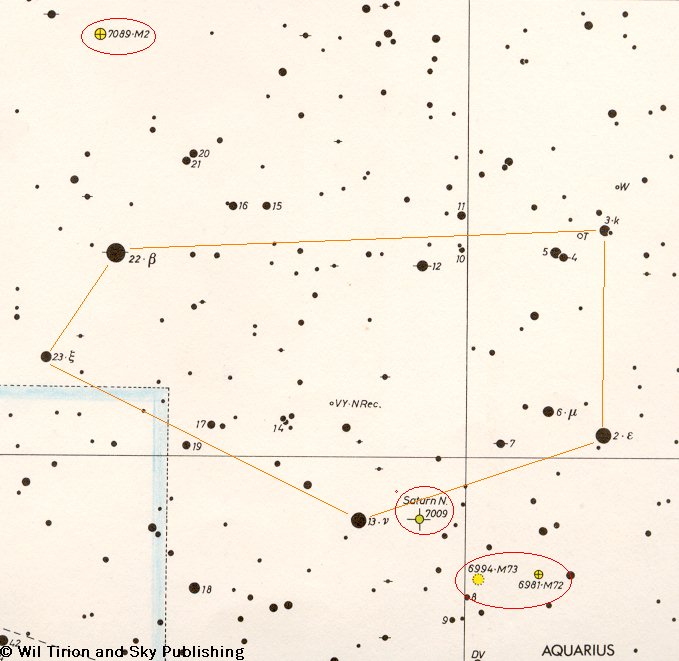Zoom Map 1

This is the first of our zoom maps, all of which are adapted from Wil
Tirion's Sky Atlas 2000.0, we'll focus on the head of Aquarius. Normally,
we use symbols to indicate how an object is best viewed (e.g., naked eye,
binoculars, or telescope). All of our objects in Aquarius, however, are
best viewed with a telescope. Our tour will go in order of Right Ascension,
which is left to right on this map.
M72. This is a moderately bright globular cluster at magnitude 9.4.
It is one of the less concentrated globulars, and appears only as a small
fuzzy patch in amateur telescopes. Scopes 8 inches and up begin to resolve
individual stars. More
on M72.
M73. "Messier's Mistake". Charles Messier, famous 18th century comet
hunter, cataloged this group of 4 dim stars as one of his "false comets".
He compiled a list of comet-like objects and noted their position on his
star chart so he wouldn't make the same mistake twice. However, there is
nothing remarkable about M73, unlike most of the other objects in his catalog.
It is simply a Y-shaped group of 10th to 11th magnitude stars.
NGC 7009, The Saturn Nebula. A gem of a planetary nebula. At 8th
magnitude, the Saturn Nebula is bright enough to show up in most amateur
scopes. It gets its name from its resemblance to the planet Saturn (see
Picture).
I have observed it with my 8" f/6 reflector at 250x. At this high magnification,
the 11.5 magnitude central star is visible, and the nebula itself is elliptical.
M2. This is one of the brightest globular clusters in the sky. At
magnitude 6.5, it is a rich, compact cluster, slightly elliptical in shape.
6" and larger telescopes show individual stars scattered around the bright,
dense core. More info
on M2. Also see our Image.
Back to Aquarius
